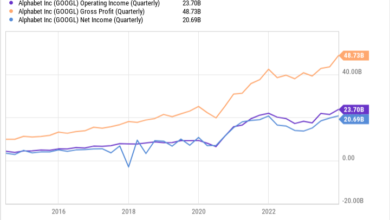Addressing barriers to climate investments in EMDEs

To mitigate and adapt to the severe and systemic consequences of climate change, emerging market and developing economies require substantial investments. in interest rates globally over the past two years, coupled with heightened policy and geopolitical uncertainty, have dampened investors’ appetites for investing in EMDEs as developed markets offer more attractive risk profiles.
Against an increasingly challenging financial backdrop, significant volumes of concessional resources will be required to improve the risk profile of climate investments in EMDEs and to make them financially viable for private capital. Blended finance can play a transformational role in bridging the interests of public and private capital if the proper policy, institutional and climate frameworks – tailored to EMDE-specific circumstances – are in place to foster a conducive investment environment.
Scaling up blended finance
To meet the rising expectations for blended finance in channelling private capital to EMDEs, existing practices must evolve to address seemingly conflicting objectives. This involves improving low mobilisation and leverage ratios and optimising the limited concessional capital from public sources to scale up blended finance volumes and attract private capital more effectively and efficiently.
In 2022, the Network for Greening the Financial System launched the Blended Finance Initiative to complement its existing work on greening the financial system aimed to use its convening power to raise awareness about blended finance. At COP28 in December 2023, the NGFS published ‘Scaling Up Blended Finance for Climate Mitigation and Adaptation in Emerging Market and Developing Economies’. This document identifies key barriers to scaling up climate blended finance solutions, provides policy recommendations to address these barriers and showcases demonstrative projects from various EMDEs that have successfully crowded in private capital into climate financing projects.
Achieving these objectives in EMDEs involves tackling structural issues, addressing limited investment opportunities for climate projects, bridging knowledge disparities within the blended finance ecosystem and navigating the customised nature of financial instruments. Investors also emphasise challenges related to a lack of climate policies, data gaps, regulatory clarity and the need for a broad enabling environment.
Collaboration across the industry
To address these barriers, partnership across the public and private sectors, multilateral development banks and development finance institutions is needed in designing and implementing blended finance solutions. These institutions operate under different mandates, regulatory regimes and project timelines, and play complementary roles. They are influenced by evolving market practices and standards, international conventions and proliferating blended finance initiatives.
Considering their diverse perspectives, these institutions may not fully appreciate the realities of other stakeholders, which could lead to potential misinterpretations and inconsistencies in expectations for blended finance across the financial system. To effectively scale up blended finance in EMDEs, we recommend focusing on the following key areas.
First, policy-makers should approach the blended finance ecosystem in a holistic way, looking at an ‘ecosystem of solutions’ across the blended finance value chain to bridge the knowledge gap between public and private sectors. Policy-makers should clarify where blended finance is needed and assess the right amount of concessional funding necessary to finalise a project, attract private capital
Second, investors are looking for EMDEs to put in place the right climate policies (such as carbon pricing) and strengthen the climate information architecture. This includes collecting high-quality, comparable and reliable climate data, appropriate pathways for adopting disclosure standards and establishing classification systems and transition taxonomies. It is also important to have robust governance and to deepen domestic capital markets.
Third, there is a need to engage with EMDE project sponsors from the early conceptualisation stage through financing to develop and bring to market a pipeline of viable projects. Efforts should focus on design, funding and technical support to improve project viability and success. Promoting greater standardisation would help reduce information asymmetries between investors and project developers, leading to more efficient allocation of capital and better risk management.
Fourth, policy-makers should promote effective risk mitigation and support innovative blended finance solutions that encourage risk diversification through risk pooling and tranching. Public-private risk sharing, through enhancing financial capacity and operating models of MDBsis crucial to attracting more capital to EMDEs. Policy-makers should also provide greater regulatory clarity for blended finance and address practical and regulatory barriers that may disincentivise private sector participation in blended finance transactions in EMDEs.
Finally, information intermediaries such as credit rating agencies and environmental, social and governance data providers need to be part of the effort to improve the investability of EMDEs and realign relevant products with blended finance realities. Intermediaries between the supply and demand of blended finance play a critical role and should be further scaled up.
Against an increasingly challenging financial backdrop, EMDEs require more investment support than ever before. Through public and private sector collaboration, blended finance could be transformational in the fight against climate change.
Ekaterina Gratcheva is Senior Adviser on Climate and Sustainable Finance and Fabio Natalucci is Deputy Director of Monetary and Capital Markets, International Monetary Fund. Cindy Van Oorschot is Director of Pension Supervision and Sustainability, De Nederlandsche Bank.
Source link






